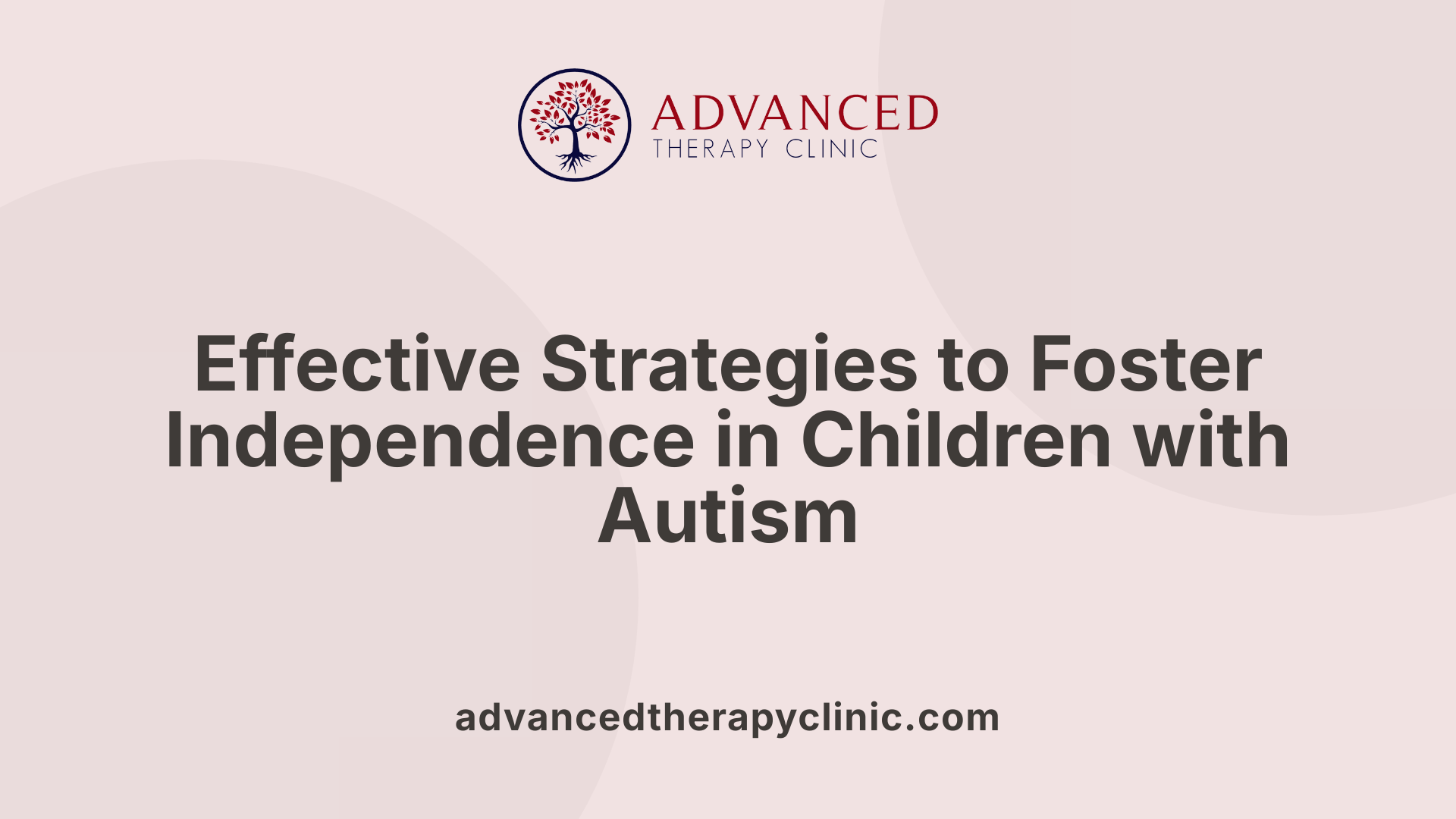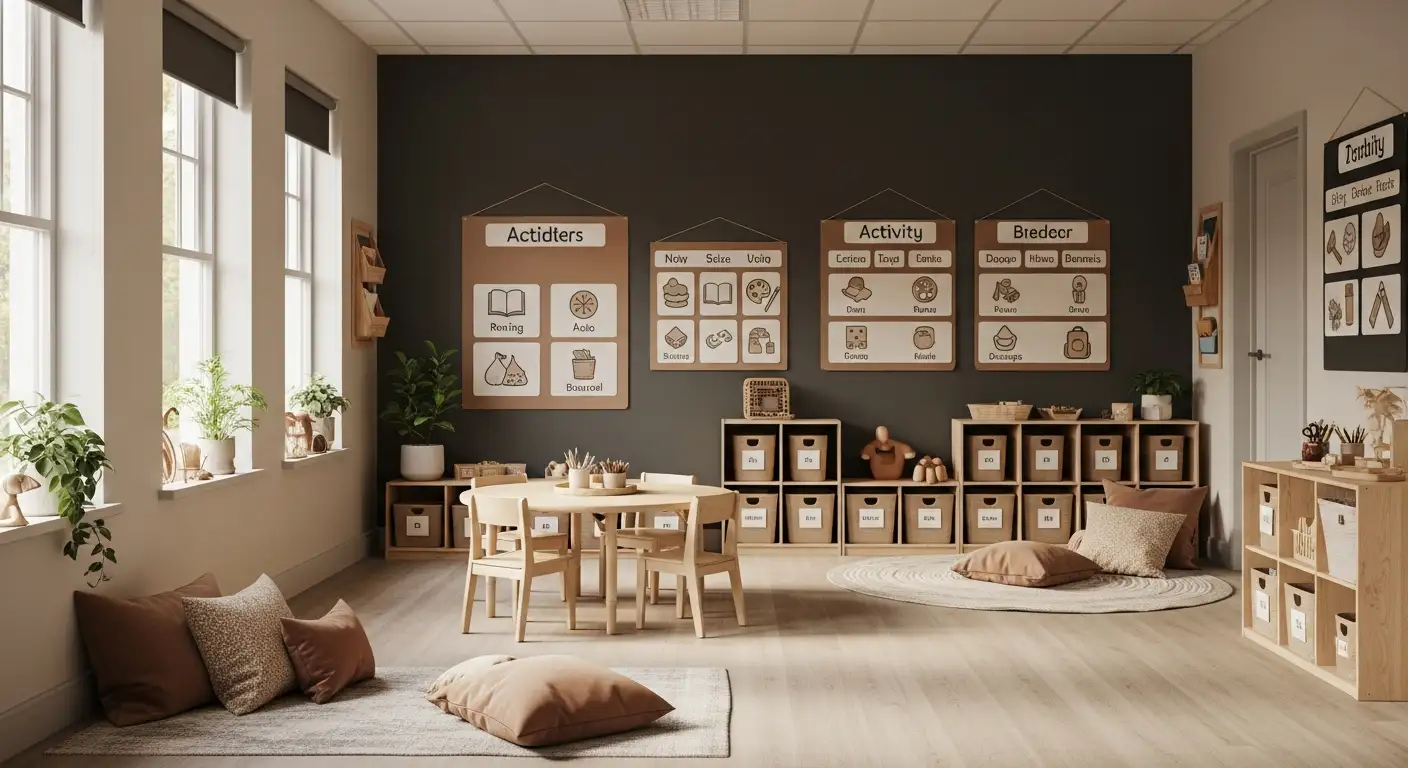How ABA Therapy Promotes Independence in Daily Activities


Understanding ABA Therapy's Impact on Independence
Applied Behavior Analysis (ABA) is an evidence-based approach that has proven highly effective in enhancing the independence of children with autism. By employing structured, personalized strategies, ABA therapy targets the development of vital everyday skills, fostering self-reliance, confidence, and greater engagement in daily routines.
Core Techniques in ABA for Building Independence
 ABA therapy employs several structured methods to enhance independence in children with autism, focusing on practical daily routines. One of the foundational approaches is task analysis, which involves breaking complex skills—like dressing or brushing teeth—into small, manageable steps. This step-by-step process makes it easier for children to learn and master each component, boosting confidence.
ABA therapy employs several structured methods to enhance independence in children with autism, focusing on practical daily routines. One of the foundational approaches is task analysis, which involves breaking complex skills—like dressing or brushing teeth—into small, manageable steps. This step-by-step process makes it easier for children to learn and master each component, boosting confidence.
Positive reinforcement is another cornerstone technique. By offering praise, tokens, or other rewards immediately after a desired behavior, therapists motivate children to repeat these actions independently. This consistent positive feedback builds a child's motivation and commitment to learning new skills.
Prompting and prompt fading play essential roles as well. Initially, children may receive prompts—such as visual cues or physical assistance—to complete a task. Over time, these prompts are gradually reduced through prompt fading, encouraging children to perform tasks with less assistance and increasing their independence.
Visual supports, like pictures, schedules, and checklists, are tailored to match each child's developmental level and learning style. These aids guide children through routines and help them understand what is expected, making transitions and daily activities smoother.
Behavior chaining is another effective strategy, where a sequence of actions is taught as a linked chain. For example, putting on a coat involves multiple steps—standing, grabbing, slipping arms in, zipping up—that are taught sequentially, then linked together to produce the full behavior.
These techniques are often combined with natural environment teaching (NET), where skills are practiced in real-life settings to ensure their relevance and help children generalize what they learn.
In summary, ABA therapy uses a variety of structured, evidence-based strategies—like task analysis, positive reinforcement, prompting, visual supports, and chaining—to foster independence. These methods help children develop essential routines and skills, enabling greater self-sufficiency and confidence in everyday life.
Building Practical Skills Through Customized Goals
 Promoting independence in children with autism involves a deliberate focus on teaching everyday skills that empower them to manage their own lives more effectively. These skills include self-care routines like brushing teeth, grooming, and personal hygiene, as well as mealtime skills such as using utensils and preparing simple snacks. Teaching household responsibilities, like putting toys away or setting the table, further enhances their ability to function independently at home.
Promoting independence in children with autism involves a deliberate focus on teaching everyday skills that empower them to manage their own lives more effectively. These skills include self-care routines like brushing teeth, grooming, and personal hygiene, as well as mealtime skills such as using utensils and preparing simple snacks. Teaching household responsibilities, like putting toys away or setting the table, further enhances their ability to function independently at home.
In addition to domestic skills, children can learn safety and community orientation, including understanding traffic signals, waiting in line, and using transportation safely. Communication improvements are also vital; strategies like augmentative and alternative communication (AAC) devices, Picture Exchange Communication System (PECS), and visual schedules are commonly used tools to support understanding and expression.
What are the outcomes of ABA intervention regarding independence? ABA therapy generally leads to notable growth in independence. It significantly improves self-care, communication, and daily living abilities by breaking tasks into manageable steps, reinforcing positive behaviors, and fostering generalization across environments. This structured approach supports children in becoming more self-reliant, boosting their confidence and capacity to participate fully in daily activities.
How does ABA therapy foster independence and social skills? ABA prepares children to develop essential social interactions, such as initiating conversations, recognizing gestures, and responding appropriately. By reducing challenging behaviors through positive reinforcement, ABA creates a supportive environment conducive to learning. The therapy emphasizes skill generalization, allowing children to apply what they learn at home, school, and in the community, which enhances their overall independence and social engagement.
Using individualized goals and data-driven methods, ABA therapy helps children build a foundation for lifelong skills. Techniques like task analysis and prompt fading gradually decrease reliance on assistance, empowering children to perform tasks with minimal support. Visual supports, reinforcement systems, and real-life practice through Natural Environment Teaching (NET) ensure skills carry over into everyday situations, ultimately helping children achieve greater autonomy and improve their quality of life.
Tools Supporting Daily Functioning

What tools and techniques does ABA employ to improve daily living skills?
Applied Behavior Analysis (ABA) uses a range of practical tools to help children with autism develop independence in their daily routines. Visual supports are among the most effective, including pictorial schedules, flashcards, and social stories. These visual cues provide clear, predictable structures that make it easier for children to understand and follow daily activities.
Social stories offer customized narratives that prepare children for specific situations, such as visiting a doctor or attending school, helping them understand expectations and appropriate behavior.
Modeling behaviors is another key technique used in ABA. Therapists demonstrate skills such as brushing teeth, dressing, or social interactions, which children observe and imitate. This method supports learning through visual and physical cues.
To manage and shape behaviors, ABA employs various behavior management tools, including prompting strategies like physical, verbal, or gestural cues, along with reinforcement systems. Positive reinforcement—offering praise or rewards—encourages children to repeat desirable behaviors, while redirection and extinction plans help reduce unwanted behaviors.
Data-driven planning is fundamental in ABA. Practitioners regularly collect data through assessments like functional behavior assessments (FBAs), which identify reasons behind behaviors and guide tailored interventions. Techniques such as prompt fading gradually decrease support, fostering independence.
Environmental modifications also play a role in promoting success. Simplifying surroundings, using visual cues, and creating consistent routines help children navigate daily tasks more confidently.
In essence, ABA's systematic combination of visual supports, modeling, reinforcement, data analysis, and environmental strategies builds a solid foundation for children with autism to gain essential life skills, from dressing and eating to household chores and social engagement.
Strategies and Methods Enhancing Independence

What strategies are used in ABA to support independence?
Applied Behavior Analysis (ABA) employs multiple strategies to foster independence in children with autism. These include task analysis, which breaks complex skills into simple, manageable steps. Visual supports such as schedules, checklists, and pictorial cues are tailored to match each child's learning style, helping them understand routines and sequences clearly.
Prompting and prompt fading are critical components; prompts provide initial guidance, which are gradually reduced to encourage independent responses. Reinforcement strategies, including positive rewards like tokens or praise, motivate children to perform tasks without assistance. Natural Environment Teaching (NET) brings learning into real-life contexts, enhancing generalization of skills to everyday situations.
All interventions are customized based on comprehensive assessments and involve collaboration with families. This personalized approach helps teach important skills ranging from money handling and household chores to safety and community participation. By focusing on developing problem-solving, emotional regulation, and executive functioning, ABA prepares children to navigate daily routines with confidence.
Through continuous data collection and adjustments, ABA ensures that each child's progress is monitored and programs are refined, reinforcing the goal of increasing independence across all life areas.
Fostering Expertise and Long-Term Success

How important is family involvement in promoting independence in children with autism?
Family participation plays a crucial role in supporting a child's development of independence. Caregivers are often the primary role models and facilitators of skill practice in daily life. Training and involving families in ABA strategies, such as reinforcement techniques and routine planning, ensure that skills learned in therapy are reinforced consistently at home and in community settings. This continuous support helps children generalize skills across various environments and promotes sustained progress.
How can skills be effectively generalized across different settings?
Generalization of skills is vital for independence. Strategies like Natural Environment Teaching (NET), where learning occurs in real-life contexts, help children apply new skills in everyday situations. Visual supports, tactile cues, and varied practice settings also reinforce learning. ABA therapists systematically plan for generalization by incorporating diverse scenarios and encouraging caregivers to practice skills in different places, ensuring that children carry over routines like dressing, communication, and safety awareness beyond the therapy sessions.
How is progress monitored throughout intervention?
Progress monitoring involves regular data collection and assessment by trained professionals. Tools such as checklists, visual schedules, and token systems track behavioral changes and skill acquisition. This ongoing evaluation allows therapists and families to adjust strategies, increase support as needed, and celebrate milestones. Consistent documentation helps measure growth in independence and informs future goal setting.
What strategies are used to reduce problematic behaviors?
Reducing behaviors such as tantrums or non-compliance is essential for building independence. ABA techniques use positive reinforcement to encourage desirable behaviors and teach replacement skills. Prompt fading gradually decreases assistance, fostering autonomy. Teaching emotional regulation, problem-solving, and communication skills helps children manage their reactions and navigate frustrations more independently.
What are the expected long-term outcomes of ABA therapy regarding independence?
Children receiving well-structured ABA intervention typically display notable improvements in daily living skills, communication, and social interactions. These gains translate into greater self-sufficiency in routines like dressing, grooming, and meal preparation. Long-term success includes increased ability to participate in community activities, pursue educational and vocational goals, and develop peer relationships. Importantly, tailored ABA programs support children in becoming confident, self-reliant individuals capable of advocating for themselves and adapting to new challenges.
Transforming Daily Lives Through ABA
ABA therapy plays a vital role in empowering children with autism to attain greater independence in their daily activities. Through personalized, evidence-based strategies like task analysis, positive reinforcement, visual supports, and natural environment teaching, children learn essential life skills that foster confidence, autonomy, and social functioning. Ongoing assessment and family collaboration ensure that these skills are effectively generalized and maintained across different settings. Ultimately, ABA not only enhances practical abilities but also significantly improves the overall quality of life, providing children with autism the tools they need to navigate the world more independently.
References
- Promoting Independence for Children with Autism - Astra ABA
- 7 Strategies to Promote Independence in ABA Therapy | Childwise
- Boosting Independence: Self-Care and Daily Living Skills Through ...
- How ABA Therapy Transforms Lives for Autism in Cincinnati, Ohio
- Applied Behavior Analysis: 7 Incredible Reasons to Consider
- 6 Life-Changing Benefits of ABA Therapy for Children with Autism
- How ABA Therapy Builds Everyday Skills and Independence
- Independence in Individuals with Autism: Role of ABA Therapy
Recent articles

Creating an IEP for a Child with Autism
Navigating the IEP Journey for Children with Autism

What Are Some Engaging Speech Therapy Games?
Unlocking Communication: The Power of Play in Speech Therapy

Speech Apraxia and Autism
Understanding the Intersection of Speech Apraxia and Autism Spectrum Disorder

Physical Therapy for Strengthening Core Stability in Children
Enhancing Children's Core Strength: The Role of Physical Therapy

Types of Speech Therapists
Exploring the Diverse Roles Within Speech Therapy

How ABA Therapy Can Help with Transitioning Between Activities
Navigating Change: ABA Therapy's Role in Easing Activity Transitions for Children


